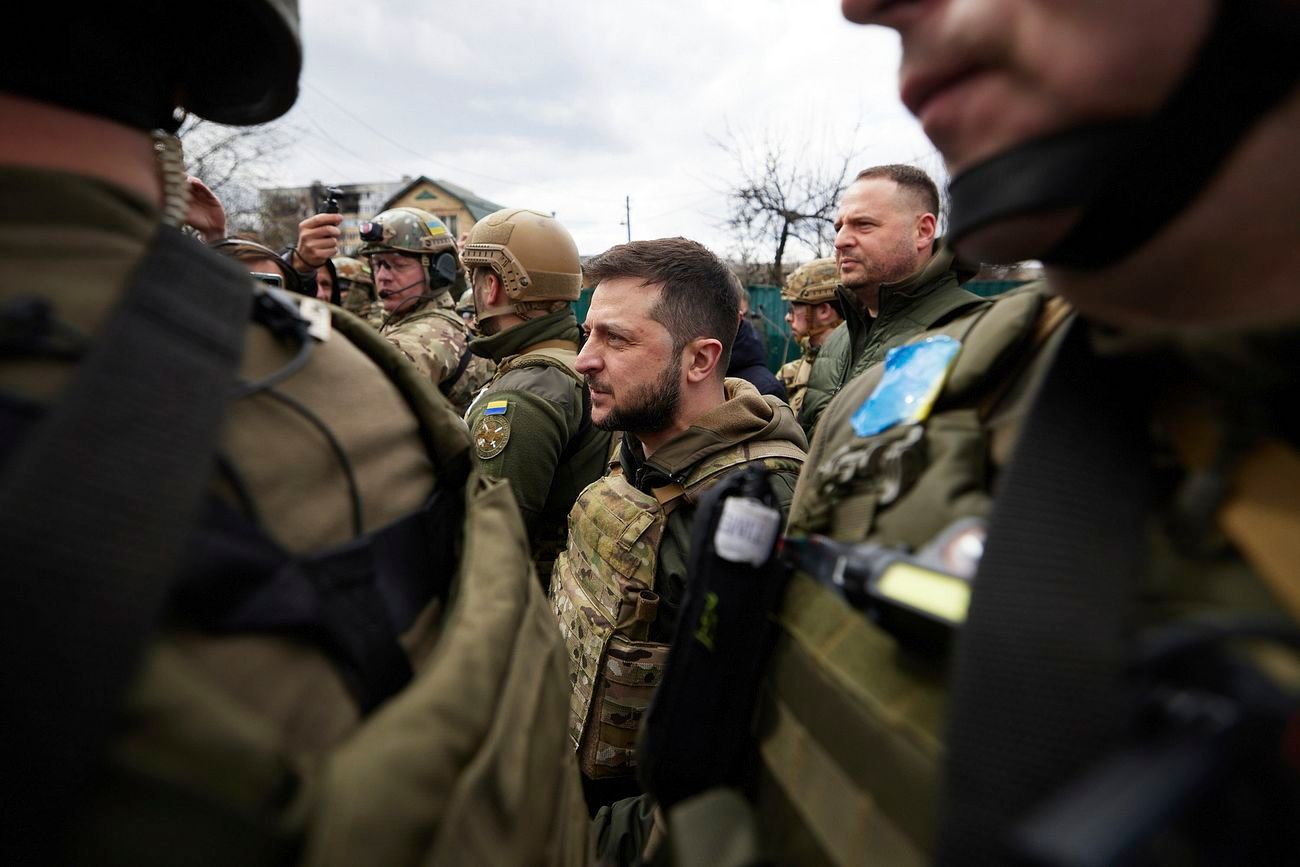
In a remarkable display of military ingenuity and strategic reach, Ukraine executed what it described as its largest long-range attack of the war on Sunday, June 2, 2025. This sophisticated operation, dubbed “Spider’s Web” by the SBU security service, reportedly involved 117 drones targeting at least 40 Russian warplanes across four military bases deep within Russian territory. The audacious strikes underscore Ukraine’s evolving capability to inflict damage on critical Russian military assets, sending a potent message to Moscow and its Western allies.
President Volodymyr Zelensky confirmed the scale of the operation, stating that 117 drones were employed, each with its own pilot, to strike “34% of [Russia’s] strategic cruise missile carriers.” This unprecedented assault, which SBU sources revealed took a year and a half to organize, aimed at significantly degrading Russia’s long-range aviation capabilities.
The logistical complexity of the “Spider’s Web” operation was extraordinary. SBU sources detailed that FPV drones were first smuggled into Russia, followed by mobile wooden cabins. Once inside Russian territory, these drones were concealed under the roofs of these cabins, which were placed on cargo vehicles. At the strategically opportune moment, the roofs were remotely opened, allowing the drones to take flight and strike their designated Russian bomber targets.
Confirmation of this innovative method emerged from various sources. Irkutsk Governor Igor Kobzev explicitly confirmed that drones attacking the Belaya military base in Sredniy, Siberia, were launched from a truck. Russian media outlets also reported similar attacks where drones emerged from lorries, with one user reportedly hearing drones flying out of a Kamaz truck near a petrol station.
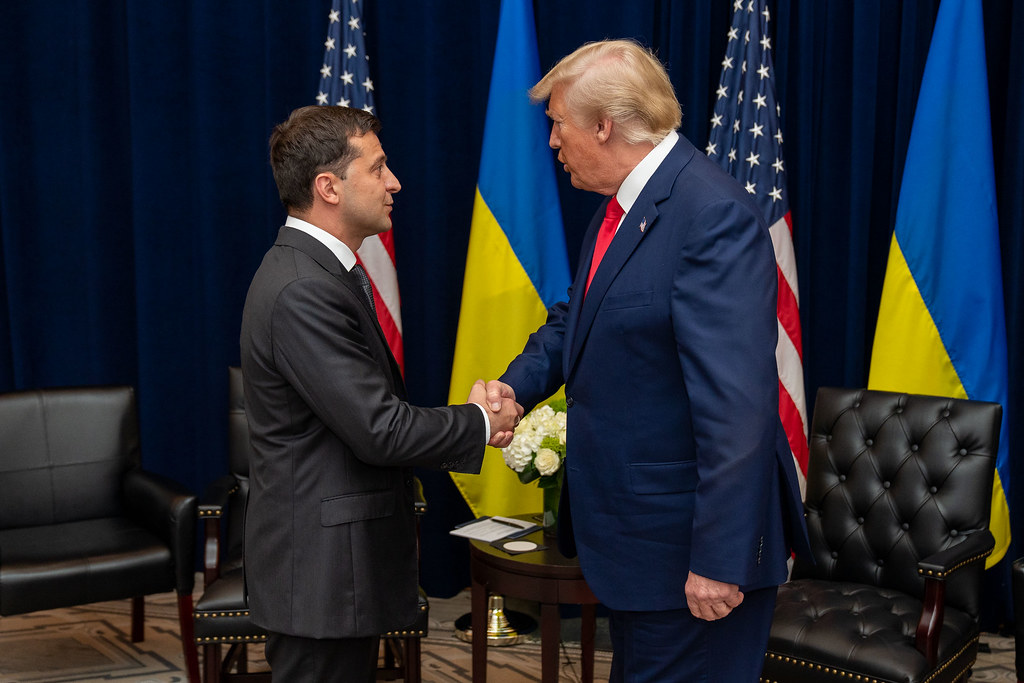
President Zelensky publicly lauded the success of the operation, congratulating SBU head Vasyl Maliuk on the “absolutely brilliant result.” In a particularly striking revelation, the Ukrainian president disclosed that the “office” of this complex operation on Russian territory was located “right next to the FSB of Russia in one of their regions.” He further confirmed that all personnel involved in the covert operation had been safely withdrawn from Russia prior to the commencement of the strikes.
The SBU sources confirmed that four pivotal Russian airbases were hit: Belaya in Irkutsk oblast, Siberia; Olenya in Murmansk oblast, Russia’s extreme north-west; Dyagilevo in central Ryazan oblast; and Ivanovo in central Ivanovo oblast. These geographically dispersed targets, with two thousands of miles from Ukraine, highlight the depth of Ukraine’s penetration into Russian airspace.
Among the high-value aircraft reportedly struck were strategic nuclear-capable bombers, specifically the Tupolev Tu-95 and Tu-22M3, as well as A-50 early warning warplanes. The SBU described the entire undertaking as “extremely complex logistically,” reflecting the immense coordination and planning required to execute such a wide-ranging, synchronized attack.
Read more about: Path to Peace or Peril? Alaska Summit Seeks Ukraine Resolution Amidst Proposed Territorial Shifts and Global Pressures
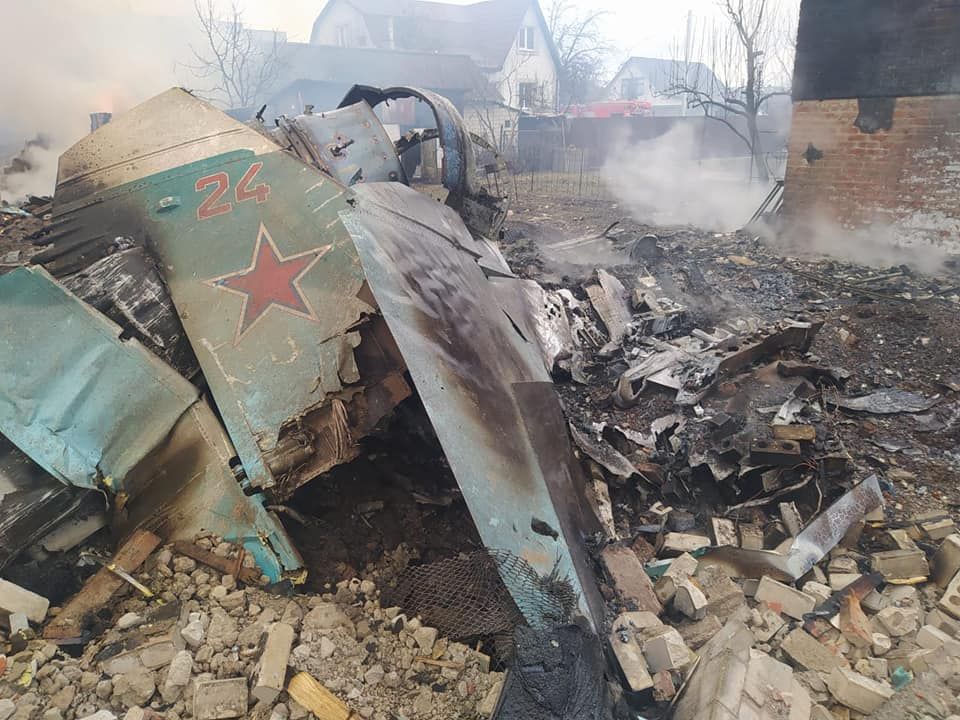
Ukrainian authorities offered varying assessments of the damage inflicted. Andriy Kovalenko, head of the Ukrainian government’s center for counteracting disinformation, claimed at least 13 Russian aircraft were destroyed and others damaged. Meanwhile, Ukraine said “over 40 bombers, or about a third of Russia’s strategic bomber fleet, were damaged or destroyed Sunday,” with its security services stating “41 Russian aircraft were destroyed or damaged.” The SBU estimated the financial toll on Russia’s strategic aviation at approximately $7 billion, promising further details.
Russia, however, presented a starkly different account. The Russian defense ministry confirmed Ukrainian attacks in five regions, labeling them a “terrorist act.” It claimed that “all attacks were repelled” on military airbases in the Ivanovo, Ryazan, and Amur regions, a location not mentioned by SBU sources. In the Murmansk and Irkutsk regions, Russia acknowledged that “several aircraft caught fire” after drones were launched from nearby areas, but asserted all blazes were extinguished and there were no casualties. The ministry also stated that “some of the participants in the terrorist attacks have been detained.”
Conflicting claims regarding the extent of the damage have made independent verification challenging. While Ukraine released footage purportedly showing drone attacks on Russian warplanes and images appeared to show Tu-95 strategic bombers on fire, the actual number of aircraft damaged or destroyed remains disputed. Russian military bloggers, for instance, offered lower figures for the damaged aircraft, highlighting the ongoing information asymmetry in the conflict.
Military equipment: Russian aircraft carrier Admiral Kuznetsov
ShipImage: MilitarySportsHoliday2017-03.jpg
ShipCaption: Admiral of the Fleet of the Soviet Union Kuznetsov in 2017
ShipCountry: Soviet Union → Russia
ShipFlag: shipboxflag
ShipName: langx
ShipNamesake: Nikolai Kuznetsov (admiral)
ShipOrdered: 3 March 1981
ShipBuilder: Black Sea Shipyard
ShipLaidDown: 1 April 1982
ShipLaunched: 6 December 1985
ShipCommissioned: 20 January 1991 (fully operational in 1995)
ShipStatus: Undergoing overhaul and repairs since March 2017
ShipIdentification: 063
ShipClass: sclass
ShipDisplacement: 43000 t
Lk: in
Abbr: on
ShipLength: 305 m
ShipBeam: 72 m
ShipDraft: 10 m
ShipPropulsion: 200000 hp
ShipSpeed: 29 kn
ShipRange: 8500 nmi
ShipEndurance: 45 days
ShipComplement: 626 air group,40 flag staff
ShipArmament: AK-630,Close-in weapon system
ShipAircraft: Su-33
Categories: 1985 ships, Admiral Kuznetsov-class aircraft carriers, Aircraft carrier fires, Aircraft carriers of Russia, All articles containing potentially dated statements, All articles with dead external links, All articles with unsourced statements, Articles containing Russian-language text, Articles containing potentially dated statements from February 2025, Articles with dead external links from June 2024, Articles with short description, Articles with unsourced statements from August 2023, Articles with unsourced statements from March 2023, CS1: unfit URL, CS1 Hebrew-language sources (he), CS1 Norwegian-language sources (no), CS1 Russian-language sources (ru), Cold War aircraft carriers of the Soviet Union, Commons link from Wikidata, Russian military intervention in the Syrian civil war, Ships built at the Black Sea Shipyard, Ships built in the Soviet Union, Ships of the Russian Northern Fleet, Short description is different from Wikidata, Use dmy dates from April 2021, Wikipedia articles needing factual verification from August 2023
Summary: Admiral Flota Sovetskogo Soyuza Kuznetsov (Russian: Адмира́л фло́та Сове́тского Сою́за Кузнецо́в, “Admiral of the Fleet of the Soviet Union Kuznetsov”) is an aircraft carrier (heavy aircraft cruiser in Russian classification) that has served as the flagship of the Russian navy. She was built by the Black Sea Shipyard, the sole manufacturer of Soviet aircraft carriers, in Nikolayev within the Ukrainian Soviet Socialist Republic (Ukrainian SSR) and launched in 1985, becoming fully operational in the Russian Navy in 1995. The initial name of the ship was Tbilisi; she was launched as Leonid Brezhnev, embarked on sea trials as Tbilisi, and was finally named after Admiral of the Fleet of the Soviet Union Nikolay Gerasimovich Kuznetsov. She was originally commissioned in the Soviet Navy, and was intended to be the lead ship of the two-ship Kuznetsov class. However, her sister ship Varyag was still incomplete when the Soviet Union disbanded in 1991. The second hull was eventually sold by Ukraine to China, completed in Dalian and commissioned as Liaoning. The retirement of the smaller Kiev-class carriers in the 1990s has left Admiral Kuznetsov as the sole carrier in the Russian Navy. Admiral Kuznetsov has been out of service since March 2017. The modernization, overhaul and repair process has been hampered by accidents, embezzlement of funds, and other setbacks. After the floating drydock PD-50 sank in Kola Bay (Murmansk) in an accident that killed one worker in October 2018, the ship was towed to Sevmorput Yard No 35. In another mishap in December 2019, a major fire killed at least one worker and injured ten others. In June 2022, the ship was transferred to a drydock at the 35th Ship Repair Plant in Murmansk, where she remained until February 2023. It was projected that repairs would be completed and the ship would be transferred back to the Russian Navy in 2024, but this was pushed back to at least 2025. In September 2024, her crew were reassigned to a combat unit in Ukraine. As of February 2025, she still remains out of service which leaves the Russian Navy without an operational aircraft carrier. In July 2025 it was reported that work on Admiral Kuznetsov had been suspended and that the ship may be written off.
Get more information about: Russian aircraft carrier Admiral Kuznetsov
Read more about: Shadows of the Past: Putin’s Campaign to Rewrite History and Eradicate a People
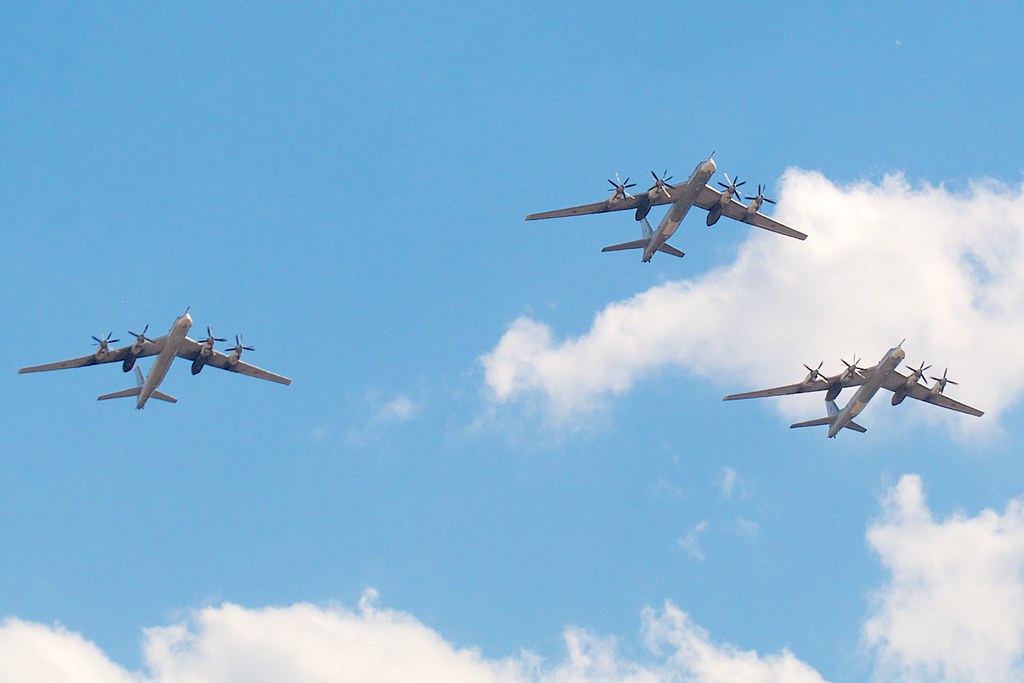
Understanding the strategic significance of the aircraft targeted is crucial to grasping the potential impact of these strikes. For decades, long-range bombers have constituted a vital component of the Soviet and Russian nuclear triad, alongside land-based intercontinental ballistic missiles and atomic-powered submarines. These heavy planes have been extensively used during the 3-year-old war in Ukraine to launch waves of cruise missile strikes across the country, underscoring their operational importance.
The Tupolev Tu-95, code-named ‘Bear’ by NATO, is a venerable four-engine turboprop aircraft designed in the 1950s. It boasts an intercontinental range and is capable of carrying eight long-range cruise missiles, which can be equipped with either conventional or nuclear warheads. Before Sunday’s strikes, Russia was estimated to possess a fleet of approximately 60 such aircraft, making any damage to them a significant blow to their strategic capabilities.
Similarly, the Tupolev Tu-22M, known as ‘Backfire’ by NATO, is a twin-engine supersonic bomber conceptualized in the 1970s. While possessing a shorter range compared to the Tu-95, its inclusion in the Soviet strategic nuclear arsenal was a point of contention during U.S.-Soviet arms control discussions due to its potential to reach the U.S. with in-flight refueling. The latest iteration, the Tu-22M3, carries Kh-22 cruise missiles that fly at over three times the speed of sound, packing a formidable punch with nearly 1,400 pounds of explosives. Russia was estimated to have between 50 and 60 Tu-22M3s in service prior to the drone attack, with some having been lost in previous Ukrainian assaults.
Military equipment: Strategic bomber
Categories: All articles needing additional references, All articles with unsourced statements, All articles with vague or ambiguous time, Articles needing additional references from June 2025, Articles with short description, Articles with unsourced statements from July 2025, Bomber aircraft, CS1 maint: bot: original URL status unknown, Russian inventions, Short description is different from Wikidata, Strategic bombers, Vague or ambiguous time from February 2024
Summary: A strategic bomber is a medium-to-long-range penetration bomber aircraft designed to drop large amounts of air-to-ground weaponry onto a distant target for the purposes of debilitating the enemy’s capacity to wage war. Unlike tactical bombers, penetrators, fighter-bombers, and attack aircraft, which are used in air interdiction operations to attack enemy combatants and military equipment, strategic bombers are designed to fly into enemy territory to destroy strategic targets (e.g., infrastructure, logistics, military installations, factories, etc.). In addition to strategic bombing, strategic bombers can be used for tactical missions. There are currently only three countries that operate strategic bombers: the United States, Russia and China. The modern strategic bomber role appeared after strategic bombing was widely employed, and atomic bombs were first used during World War II. Nuclear strike missions (i.e., delivering nuclear-armed missiles or bombs) can potentially be carried out by most modern fighter-bombers and strike fighters, even at intercontinental range, with the use of aerial refueling, so any nation possessing this combination of equipment and techniques theoretically has such capability. Primary delivery aircraft for a modern strategic bombing mission need not always necessarily be a heavy bomber type, and any modern aircraft capable of nuclear strikes at long range is equally able to carry out tactical missions with conventional weapons. An example is France’s Mirage IV, a small strategic bomber replaced in service by the ASMP-equipped Mirage 2000N fighter-bomber and Rafale multirole fighter.
Get more information about: Strategic bomber
Read more about: Inside the US Army’s 250th Anniversary Parade: Tanks, Logistics, and Spectacle on the National Mall
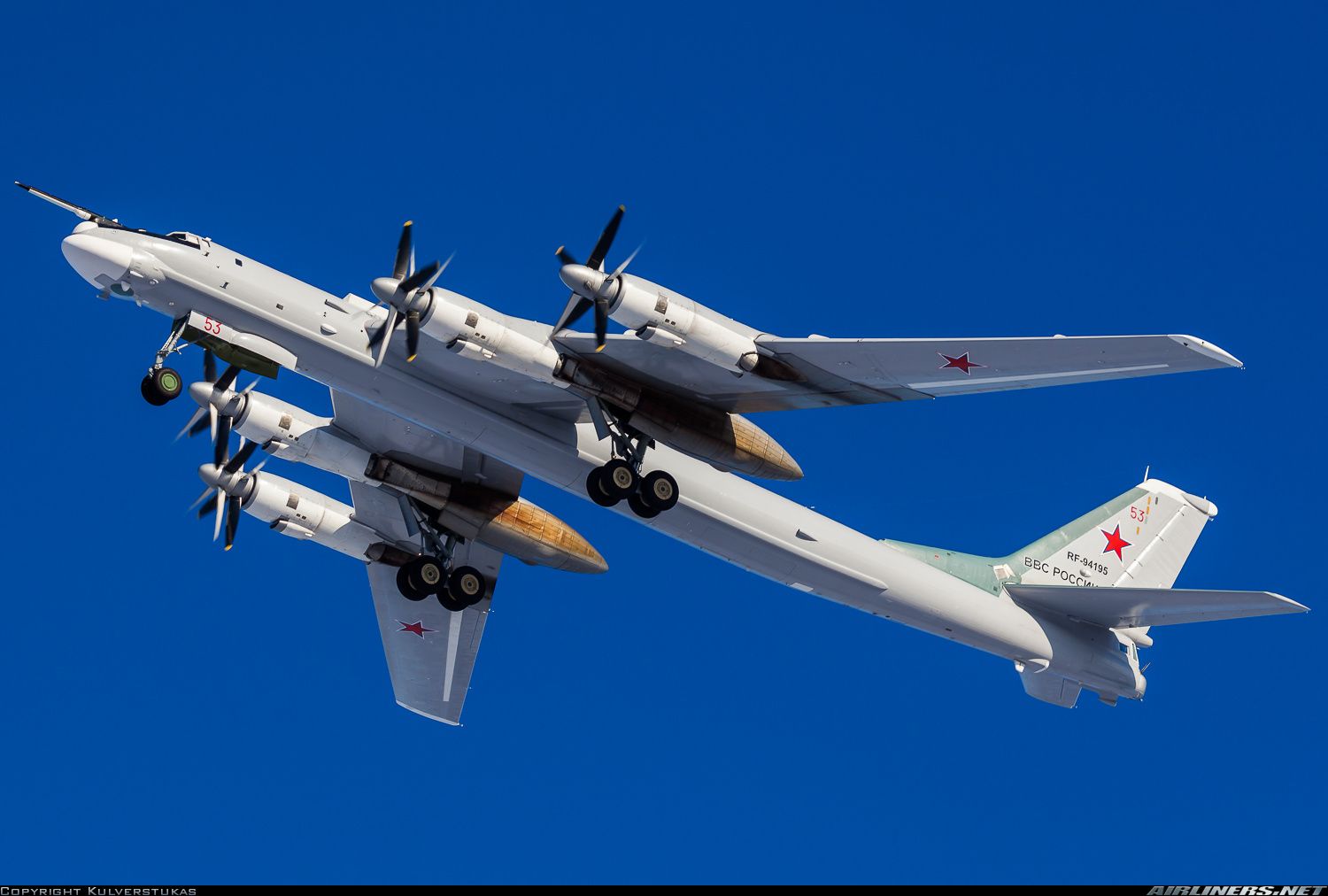
A critical factor exacerbating the impact of these losses is the cessation of production for both the Tu-95 and Tu-22M after the 1991 collapse of the USSR. This means that any of these aircraft lost in the recent strikes cannot be immediately replaced, underscoring a long-term deficit for Russia’s air force. Douglas Barrie of the International Institute of Strategic Studies observed that Russia lost a “significant part of its heavy bomber fleet” with “no immediate ability to replace it,” suggesting this might paradoxically “give impetus” to Russia’s next-generation strategic bomber program.
Furthermore, the reported targeting of the A-50 early warning and control aircraft represents another significant blow. Comparable to the U.S. AWACS planes, the A-50 is crucial for coordinating aerial attacks. Only a limited number of these specialized planes are in service with the Russian military, and any loss severely diminishes Russia’s command and control capabilities, making future aerial operations more challenging.
These widespread strikes have brought renewed scrutiny to Russia’s efforts, or lack thereof, in protecting its high-value assets. Repeated Ukrainian attacks on the Engels air base, a primary hub for Russian nuclear-capable strategic bombers, had already compelled Moscow to relocate these aircraft to more distant bases, such as Olenya on the Arctic Kola Peninsula. Yet, even these remote locations proved vulnerable.
Satellite imagery has revealed some of Russia’s improvised attempts at protection, notably covering Tu-95s at various air bases with layers of old tires. This measure, widely criticized by military bloggers and mocked on social media for its “dubious efficiency,” highlights the challenges Russia faces in adequately safeguarding its large strategic aircraft from evolving drone threats.
Military equipment: Tupolev Tu-95
Name: Tupolev Tu-95
Caption: A Tu-95MS flying over Moscow, 2008.
Type: strategic bomber
NationalOrigin: Soviet Union
Manufacturer: Aviakor
DesignGroup: Tupolev
FirstFlight: Start date and age
Introduction: 1956
Status: In limited service
PrimaryUser: Russian Aerospace Forces
MoreUsers: Soviet Air Forces
Produced: 1952–1993
NumberBuilt: >500
Variants: Tupolev Tu-114,Tupolev Tu-142,Tupolev Tu-95LAL,Tupolev Tu-116
Categories: 1950s Soviet bomber aircraft, Aircraft first flown in 1952, Aircraft with contra-rotating propellers, Aircraft with retractable tricycle landing gear, All Wikipedia articles in need of updating, All articles containing potentially dated statements, All articles lacking reliable references, All articles with unsourced statements, Articles containing Russian-language text, Articles containing potentially dated statements from 2020, Articles containing video clips, Articles lacking reliable references from August 2016, Articles lacking reliable references from August 2022, Articles needing more detailed references, Articles with short description, Articles with unsourced statements from November 2020, CS1 Russian-language sources (ru), CS1 Ukrainian-language sources (uk), Commons category link is on Wikidata, Four-engined tractor aircraft, Four-engined turboprop aircraft, Short description is different from Wikidata, Shoulder-wing aircraft, Strategic bombers, Tupolev aircraft, Webarchive template wayback links, Wikipedia articles in need of updating from June 2025, Wikipedia extended-confirmed-protected pages
Summary: The Tupolev Tu-95 (Russian: Туполев Ту-95; NATO reporting name: “Bear”) is a large, four-engine turboprop-powered strategic bomber and missile platform. First flown in 1952, the Tu-95 entered service with the Long-Range Aviation of the Soviet Air Forces in 1956 and was first used in combat in 2015. It is expected to serve the Russian Aerospace Forces until at least 2040.
A development of the bomber for maritime patrol is designated the Tu-142, while a passenger airliner derivative was called the Tu-114.
The aircraft has four Kuznetsov NK-12 engines with contra-rotating propellers. It is the only turboprop-powered strategic bomber still in operational use today. The Tu-95 is one of the loudest military aircraft, particularly because the tips of the propeller blades move faster than the speed of sound. Its distinctive swept-back wings are set at an angle of 35°. The Tu-95 is the only propeller-driven aircraft with swept wings built in large numbers.
Get more information about: Tupolev Tu-95
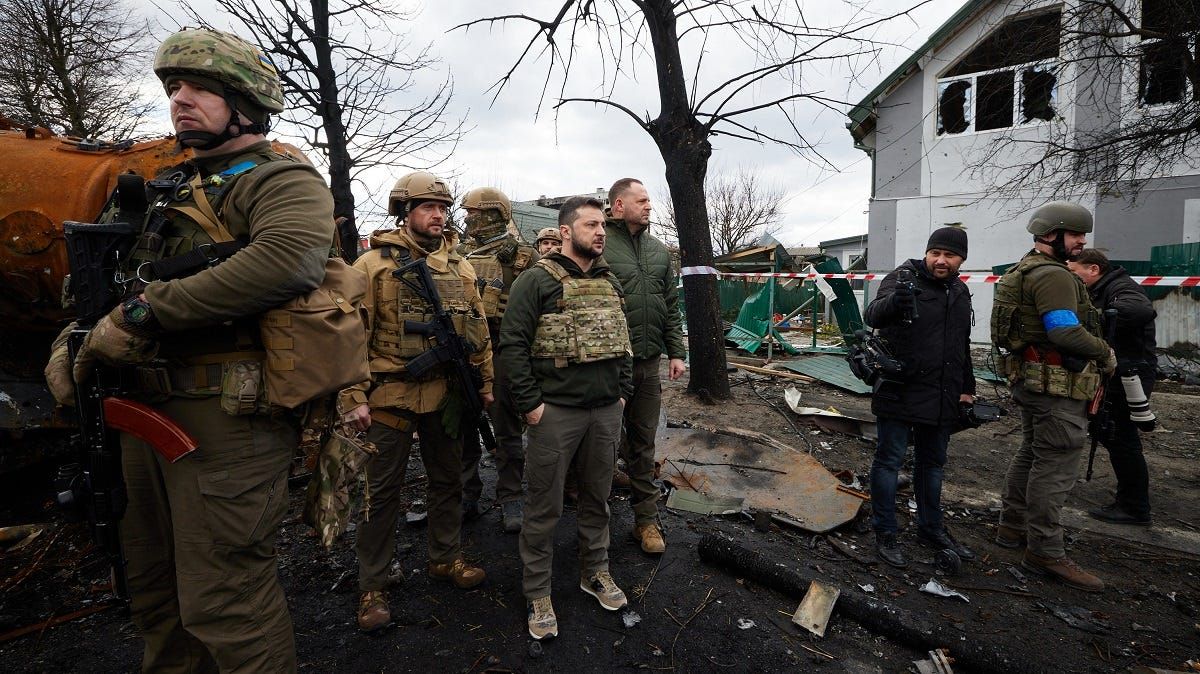
The timing of Ukraine’s major drone strike coincided with the convening of a second round of peace talks between Russian and Ukrainian negotiators in Istanbul, Turkey, on Monday. The talks, expected to commence around 13:00 local time at the Ciragan Palace, were already clouded by low expectations, with the two warring sides remaining far apart on pathways to end the conflict. This major military development further underscored the chasm between diplomatic efforts and the realities on the ground.
Simultaneously with the large-scale drone attack on Russia, Ukrainian authorities reported a massive drone and missile assault on its own territory over the weekend. Kharkiv, in particular, was hit in the early hours of Monday, resulting in injuries to at least six people, including a seven-year-old child, according to the region’s governor. This wave of attacks, which Ukraine said involved 472 drones and seven ballistic and cruise missiles, appeared to be one of the largest single Russian drone attacks to date.
In related developments, Russia’s state news agency Ria reported that the country’s security service thwarted an attempted arson attack in the Primorye region, claiming two residents were attempting to sabotage a railway track on Ukraine’s orders. Separately, Ukraine’s land forces disclosed that 12 military personnel were killed and over 60 injured in a Russian missile strike on a training center, an incident that prompted Maj Gen Mykhailo Drapatyi, head of Ukraine’s land forces, to tender his resignation due to a “personal sense of responsibility for the tragedy.”
Military equipment: Operation Spiderweb
Partof: attacks in Russia during the Russian invasion of Ukraine
Caption: Tupolev Tu-95
Location: Olenya,Dyagilevo,Ivanovo Severny (air base),Belaya air base
Target: Russian Air Force
Date: Start date
ExecutedBy: Security Service of Ukraine
Outcome: 10–11 Tu-95MS and Tu-22M3 destroyed (per The War Zone)
Categories: 2025 airstrikes, 21st-century military history of Ukraine, Articles containing OSM location maps, Articles containing Ukrainian-language text, Articles with short description, Attacks in Russia during the Russian invasion of Ukraine, Attacks in Russia in 2025, Attacks on airbases in Russia, Attacks on military installations in 2025, CS1 German-language sources (de), CS1 Russian-language sources (ru), CS1 Ukrainian-language sources (uk), CS1 uses Ukrainian-language script (uk), Commons category link from Wikidata, Drone strikes conducted by Ukraine, Drone strikes in Russia, History of Irkutsk Oblast, History of Ivanovo Oblast, History of Murmansk Oblast, History of Ryazan Oblast, Interlanguage link template existing link, June 2025 in Russia, Military operations of the Russian invasion of Ukraine in 2025, Pages using the Kartographer extension, Security Service of Ukraine, Short description is different from Wikidata, Spillover of the Russian invasion of Ukraine, Ukrainian airstrikes during the Russian invasion of Ukraine, Use British English from June 2025, Use dmy dates from June 2025, Wikipedia articles needing clarification from June 2025, Wikipedia extended-confirmed-protected pages
Summary: Operation Spiderweb (Ukrainian: Операція «Павутина», romanized: Operátsija “Pavutýna”) was a covert drone attack carried out by the Security Service of Ukraine (SBU) deep inside Russia on 1 June 2025, during the Russo-Ukrainian War. The coordinated strikes targeted the Russian Air Force’s Long-Range Aviation assets at five air bases—Belaya, Dyagilevo, Ivanovo Severny, Olenya, and Ukrainka—using drones concealed in and launched from trucks on Russian territory.
It was the largest drone attack on Russian air bases up to that point in the war, employing 117 drones, according to Ukrainian officials. According to two US officials speaking to Reuters, about 20 military aircraft were hit in the attack, ten of which were destroyed. Russia confirmed that the attack took place. The operation was notable for its unprecedented geographical reach—spanning five oblasts across five time zones—particularly the strike on Belaya Air Base in Eastern Siberia, where damage was confirmed 4,300 km (2,700 mi) from Ukraine.
Get more information about: Operation Spiderweb
Read more about: Path to Peace or Peril? Alaska Summit Seeks Ukraine Resolution Amidst Proposed Territorial Shifts and Global Pressures
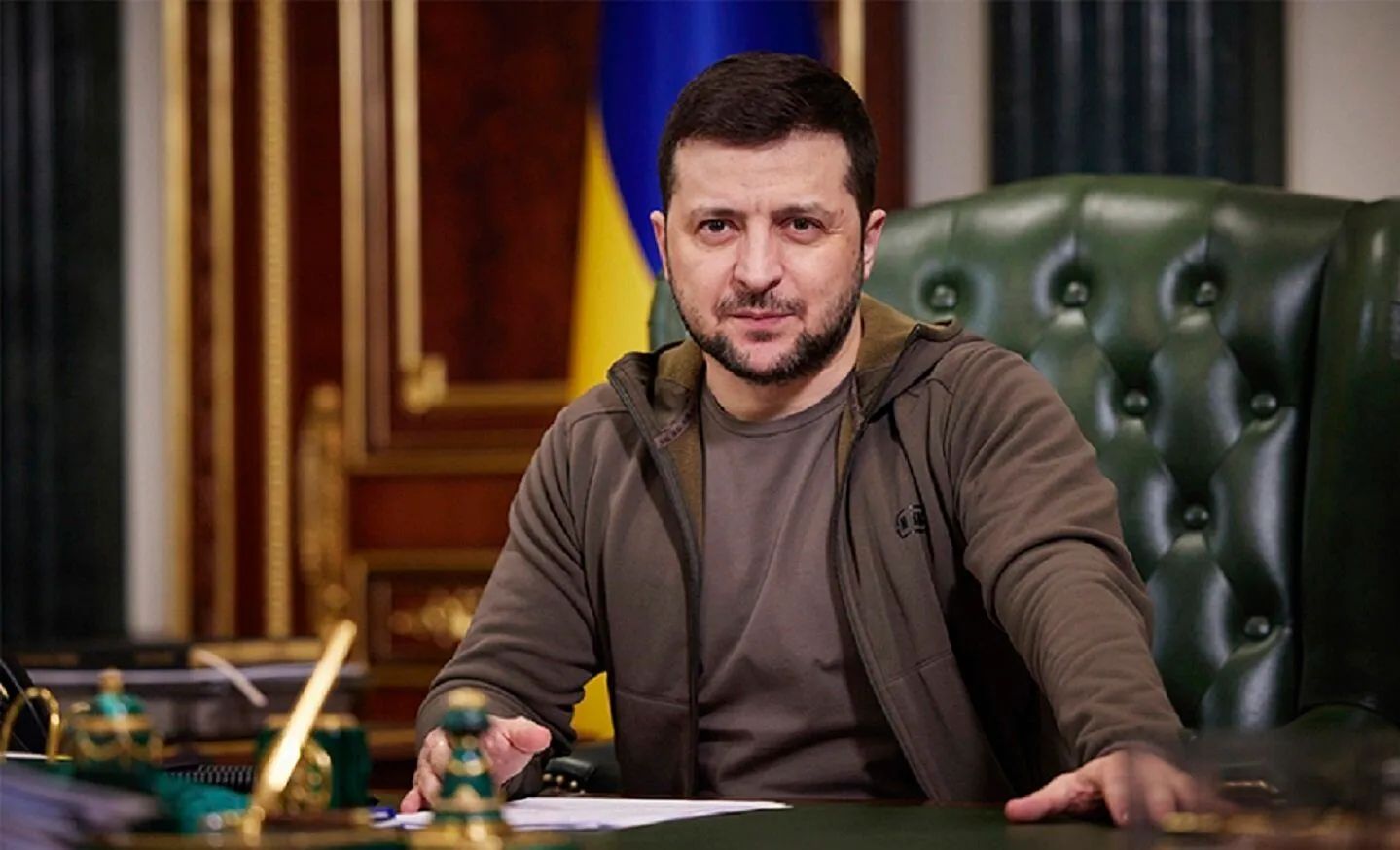
Ukrainian President Volodymyr Zelenskyy has consistently framed the defense of his nation as a critical test for broader Western resolve, especially after Russia fired at least 117 missiles and drones in another significant overnight attack on Ukraine’s energy infrastructure facilities. He emphasized the ongoing Russian targeting of Ukraine’s energy sector during winter, impacting gas infrastructure and facilities essential for daily life.
While air alerts sounded across Ukraine during these recent Russian barrages, Zelenskyy acknowledged the heroic efforts of Ukraine’s air defenders in maintaining the energy system’s operation. However, he stressed the continuous need to “strengthen the existing capabilities of the Ukrainian air shield,” recalling unfulfilled promises from partners at the NATO summit in Washington and in the Ramstein format regarding licenses for the production of air defense and anti-missile systems.
These recent strikes on energy infrastructure followed another record-breaking night of Ukrainian drone attacks in Western Russia. Kyiv’s forces had reportedly hit a chemical plant in the Tula region, ammunition warehouses at the Engels airfield in the Saratov region, an oil refinery in Saratov, and a chemical plant in Bryansk. A source in the Security Service of Ukraine informed ABC News that these actions constituted a “painful blow to the Russian Federation’s ability to wage war in Ukraine” by targeting “enemy military facilities and enterprises that work for the Russian military-industrial complex.”
The international community has taken note of Ukraine’s burgeoning drone capabilities. U.S. Defense Secretary Pete Hegseth was briefed on the June 2nd attack, with a senior defense official, speaking anonymously, characterizing it as representing “a level of sophistication that Washington had not seen before.” U.S. Ambassador to Ukraine Bridget Brink also publicly thanked Ukraine’s “brave air defenders for their relentless and heroic work” following Russian attacks on Ukraine.
Military equipment: Missile
TotalWidth: 250
Header: large
Perrow: 2/2/2
Footer: R-36 (missile),intercontinental ballistic missile
Categories: All articles containing potentially dated statements, Ammunition, Articles containing potentially dated statements from 2023, Articles with short description, Commons category link is on Wikidata, Commons link is on Wikidata, Explosive weapons, Missile types, Missiles, Pages using multiple image with auto scaled images, Rockets and missiles, Short description matches Wikidata, Wikipedia semi-protected pages
Summary: A missile is an airborne ranged weapon capable of self-propelled flight aided usually by a propellant, jet engine or rocket motor.
Historically, ‘missile’ referred to any projectile that is thrown, shot or propelled towards a target; this usage is still recognized today with any unguided jet- or rocket-propelled weapons generally described as rocket artillery. Airborne explosive devices without propulsion are referred to as shells if fired by an artillery piece and bombs if dropped by an aircraft.
Missiles are also generally guided towards specific targets termed as guided missiles or guided rockets. Missile systems usually have five system components: targeting, guidance system, flight system, engine, and warhead. Missiles are primarily classified into different types based on firing source and target such as surface-to-surface, air-to-surface, surface-to-air and air-to-air missiles.
Get more information about: Missile
Read more about: Path to Peace or Peril? Alaska Summit Seeks Ukraine Resolution Amidst Proposed Territorial Shifts and Global Pressures

Notably, a Trump administration official indicated that former President Trump was not informed beforehand of the drone attacks targeting Russian air bases. Trump, who has recently intensified his criticism of Russian President Vladimir Putin, had not publicly commented on the attacks as of Monday morning. These developments unfold amidst ongoing discussions about Ukraine’s potential agreements, including a proposed unconditional 30-day ceasefire.
Military equipment: Drone
Categories: All article disambiguation pages, All disambiguation pages, Disambiguation pages, Short description is different from Wikidata
Summary: Drone or The Drones may refer to:
Get more information about: Drone
Read more about: Path to Peace or Peril? Alaska Summit Seeks Ukraine Resolution Amidst Proposed Territorial Shifts and Global Pressures
Ukraine’s audacious “Spider’s Web” operation, reaching deep into Siberia and Russia’s far north, undeniably marks a new phase in the conflict. It demonstrates Ukraine’s capacity for strategic projection and innovation in asymmetric warfare, compelling Russia to confront vulnerabilities within its own borders. As the conflict grinds on, the evolving capabilities of drone warfare and the ongoing struggle for aerial supremacy are poised to continue shaping the trajectory of this pivotal geopolitical confrontation, underscoring the enduring need for sustained international support for Ukraine’s defense.



.jpg/1200px-Dawn_on_the_S_rim_of_the_Grand_Canyon_(8645178272).jpg)